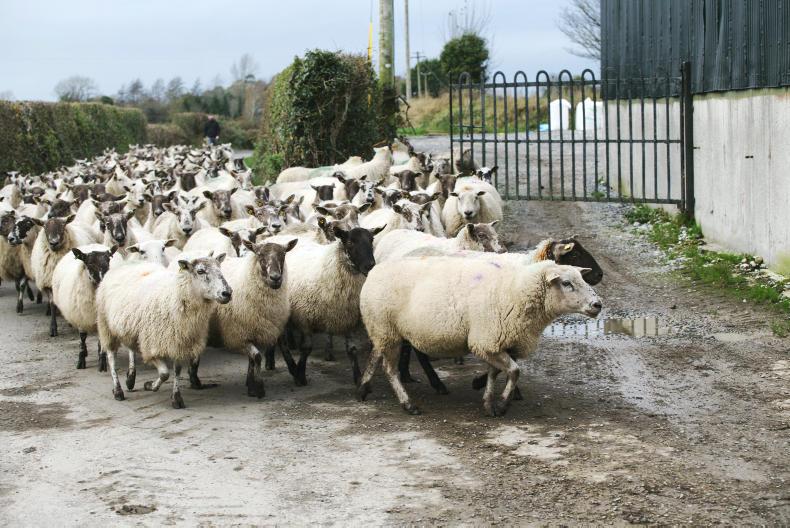Breeding checks
Farmers report mature ewes as generally being in good body condition, with lower numbers falling below target body condition. With breeding just weeks away for many it is important regular assessments are continued and any ewes falling below a target body condition score of 3.5 are given preferential treatment.
While there may be slight breed differences it will take ewes an average of seven to eight weeks to improve one body condition score which equates to a liveweight gain in the region of 8kg to 12kg depending on the mature weight of ewes. The rate of recovery will also depend on the starting condition and age with older ewes lacking significant flesh taking significantly longer to regain condition. Rams should also not be forgotten in breeding checks with body condition and any signs of lameness particularly important to address.
Ram effect
A downside to breeding ewe lambs is a prolonged lambing period, as they are typically slower to conceive. Work completed by Tim Keady, Teagasc Athenry, points to a 35 day mating period being required to achieve first mating for 90% of a ewe lamb flock. Due to ewe lambs having a lower pregnancy rate per oestrus than mature ewes, Tim lists a 70% conception rate after a 35-day mating period as the standard. The ram effect can be used to compact the mating season and subsequent lambing period.
For the ram effect to work, ewe lambs should ideally be out of sight and smell of rams for the previous month. The timetable includes introducing teaser or aproned rams on day one. These can be removed after 24 to 48 hours. The introduction of adult rams will trigger a silent heat (not detected by rams) in most ewes that are not already cycling within 36 hours while a proportion will have a second silent heat after six days. Ewes will cycle approximately 17 days after the final silent heat giving rise to two peak mating periods – at day 18 after rams were first introduced and day 23. It is recommended however to introduce fertile rams to ewes at day 14 to allow for any variation in cycle length and also to pick up any sheep which were already cyclic at time of ram introduction.
Dog control
Submissions to the public consultation on the control of dogs, opened in July by the Department of Rural and Community Development, close on Tuesday 6 September at 5.30pm. There is a consultation document available at http://ifj.ie/dogcontrol. Scroll down the page and click on the download link titled ‘A review of measures relating to the control of dogs in Ireland’. The document explains the rules that are already in place and raises a series of 10 questions that comments or submissions are desired on.
As sheep farmers are probably the hardest hit by inadequate control of dogs, it is well worth farmers having their say. The Department of Rural and Community Development would like comments or submissions to be emailed to dogsconsultation@drcd.gov.ie, while postal submissions can be sent to Dog Control Unit, Department of Rural and Community Development, Government Buildings, Ballina, Co Mayo, F26 E8N6.






 This is a subscriber-only article
This is a subscriber-only article










SHARING OPTIONS: